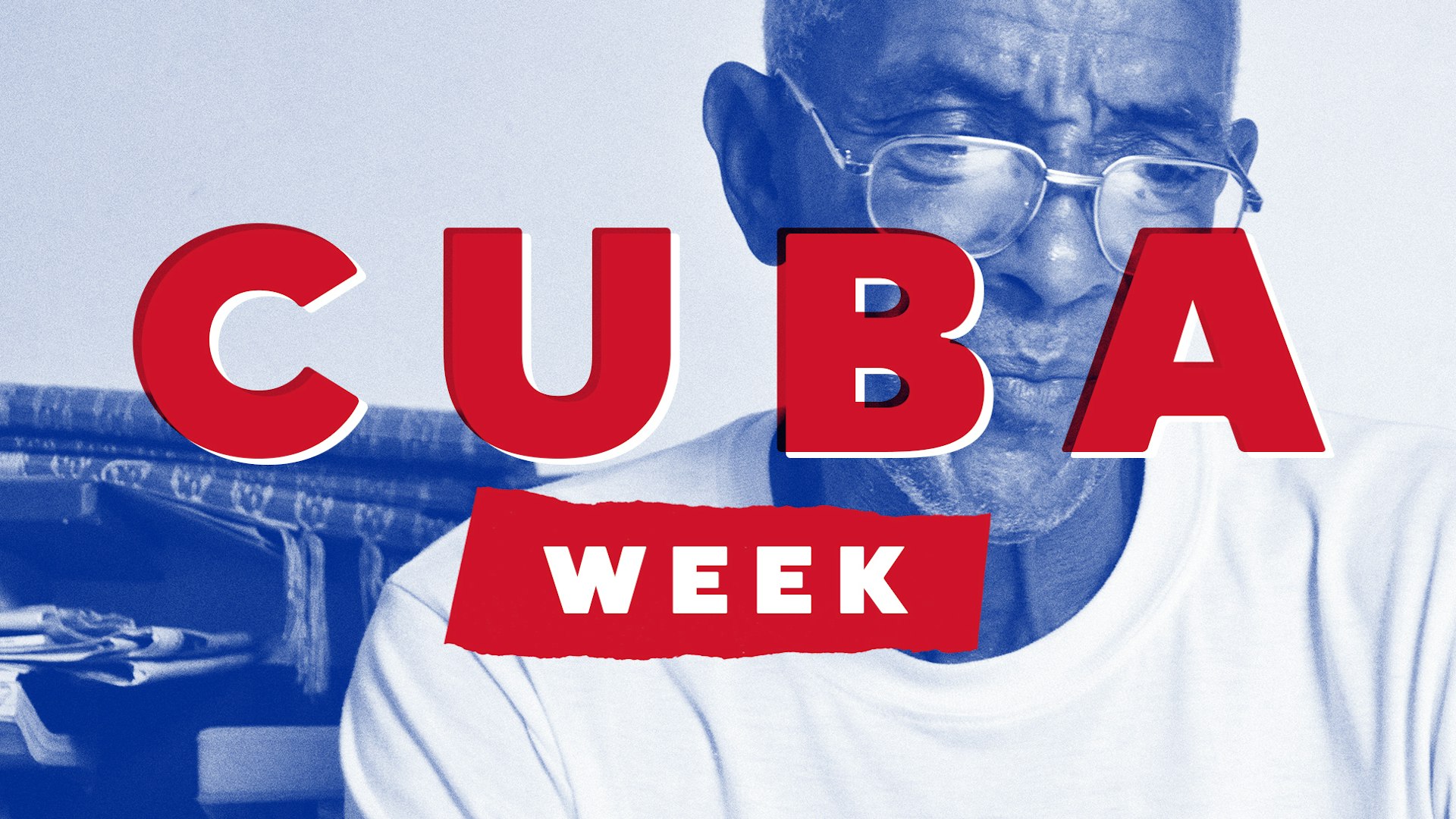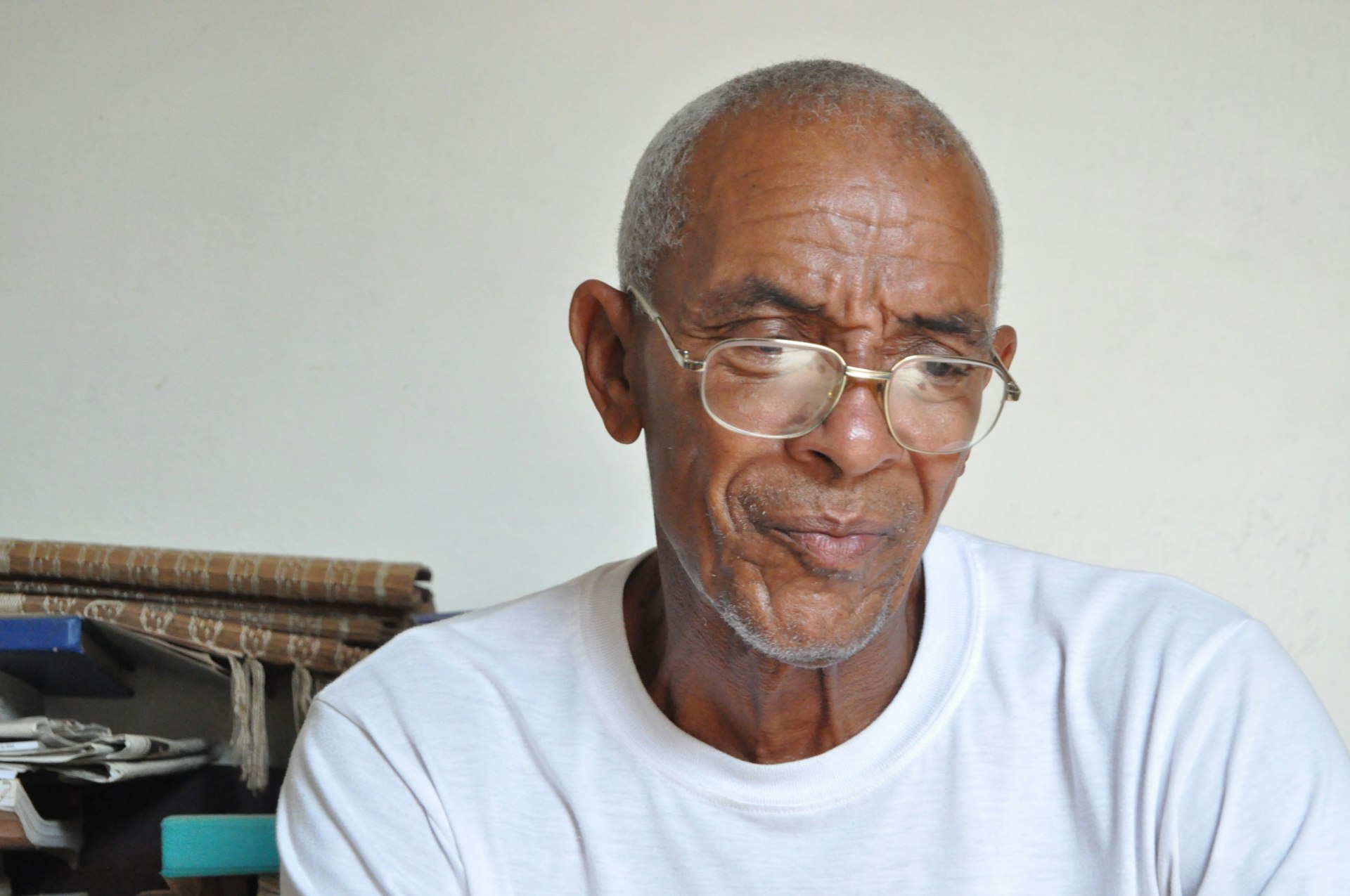
The Long Read: The story of Charlie Hill, an FBI fugitive in Havana
- Text by Carlos Álvarez Rodríguez
- Photography by Carlos Álvarez Rodríguez
It’s late in the night on November 8, 1971 in Albuquerque, New Mexico. Robert Rosenbloom, a 28-year-old US Army veteran, is about to die. At 11pm, a 1962 Ford Galaxie coming from Oakland barrels along the Interstate 40 Highway, and Rosenbloom decides to stop it. The Ford is loaded. Loaded with three military rifles, a 12-calibre shotgun, political literature, dynamite and grenades, and three members of the New African Republic, or NAR: Masheo Sundiata, Antar Ra and Fela Olatunji. They’re on the run.
The NAR is a radical political organisation, founded by contemporaries of Malcom X determined to establish an independent black nationalist nation in five southern U.S. states: Louisiana, Mississippi, Alabama, Georgia and South Carolina. As for Rosenbloom, his aim is slightly less ambitious: to successfully detain these men.
For a moment, all is still in the deserted desert. As instructed, the three fugitives get out of the car. Rosenbloom asks them to open the trunk. “The trunk will only be opened at the station”, Olatunji calmly replies.
Undeterred, Rosenbloom tells the men to follow him, but of course, nobody will. Someone draws a 45-calibre revolver. Someone pulls the trigger. A deadly bullet passes through the lieutenant’s throat. Stepping forward, Olatunji sees the patrolman’s hat on the ground, and the growing pool of viscous blood that surrounds it. He checks for a pulse, but there isn’t one.
Rosenbloom has two children. Tammy is three years old, and Robert has just turned two.
**
“By now they must be forty-something.”
“Yes, I was thinking about the boy the other day. But if he didn’t come at twenty or thirty, dressed as a ranger to kill me, it’ll be difficult for him to do it now.”
Charles Hill is audibly foreign. He confuses nouns and adjectives, twisting his words as he speaks.
“Maybe he won’t do it.”
“Maybe. A while back, when the price on Assata’s head rose, I read some correspondence between bounty hunters that discussed the possibility of finding her.”
“How did you read that?”
“No. No.”
“Do you have contact with Assata?”
“I don’t even want to.”
“Can you tell me where you read the bounty hunters’ conversations?”
“No, because I can’t tell you who gave them to me.”
“Did you ever suspect someone was after you?”
“Yes, it was in ’93 or ’94. A man found me in the Parque Central and he passed me the details of the Ambos Mundos Hotel. I didn’t know what to do. At first, I thought about not going, but my curiosity won. They were journalists from Albuquerque, two of them, and said they wanted to interview me. They didn’t have journalist visas though, so I went to the authorities to report them. That afternoon, as I arrived at my house, the very same guys were filming outside, but I hadn’t given them my address.”
“What happened?”
“They were forced to leave Cuba early. I told the authorities that I wanted to negotiate, that I was afraid. They told me I had no need to be.”
“You felt alone? Exposed?”
“Oh yes, of course.”
“Why’s that?”
“Have you ever been asleep and kicked off your covers?
“Yes.”
“I had that feeling. Constantly uncovered. Constantly cold.”
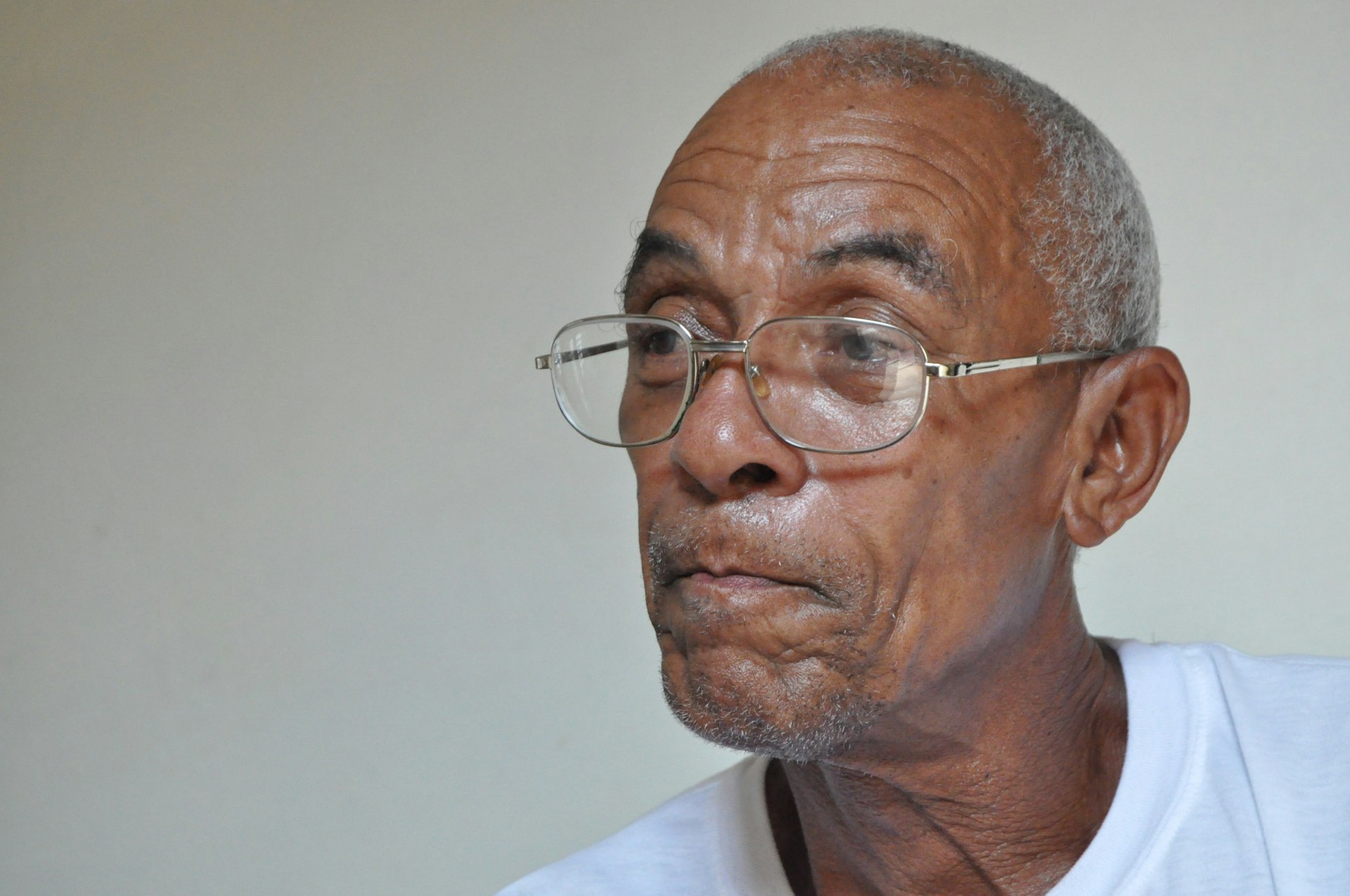
It’s Havana, 2014. The Cuban and US governments are still baying for blood.
There’s a small fridge in the house, a kerosene lamp, a broken bed and a dresser with a fogged mirror too. Behind the door in a corner sits a pile of coins, a dry coconut, a wooden axe and the face of an Eleguá carved in wood: all symbols of the Yoruba religion. There’s an armchair in the room, and sitting in the armchair, rocking back and forth, is Charles.
He’s dressed in black moccasins, with white socks that have slipped slightly down. His fraying jeans have been fashioned into shorts. The bulging veins around his lower legs and thighs are striking, as is the deep black scar along his right arm. His hair is greying, his skin caramel and smooth. His athletic torso seems not to have aged, as he looks over a pair of small bifocal glasses.
His Cuban daughter, now nearly 30, visits him fairly regularly. Antar, his young son, lives just a few blocks away. Nothing is more precious to Charles than his son. He doesn’t have any friends here, although he did at one time have two: Ralph Goodwin and Michael Finney. Goodwin drowned in 1973, and Finney battled with lung cancer until he finally lost in 2004. Now Charles is left alone he talks about a dream from a long time ago, a dream that never went away, and became a premonition.
**
“Did you ever suspect anyone else?”
“Many people, yeah. Many Americans have come to meet me. Students, university professors from California, Pastors for Peace…”
“Does it play on your mind?”
“I think about them sometimes, each plays out separately in my mind. They’re there on the hard drive; I can never forget the danger. That thing, that feeling.”
“What does it feel like?”
“It’s like fighting against a load people, but all at once.”
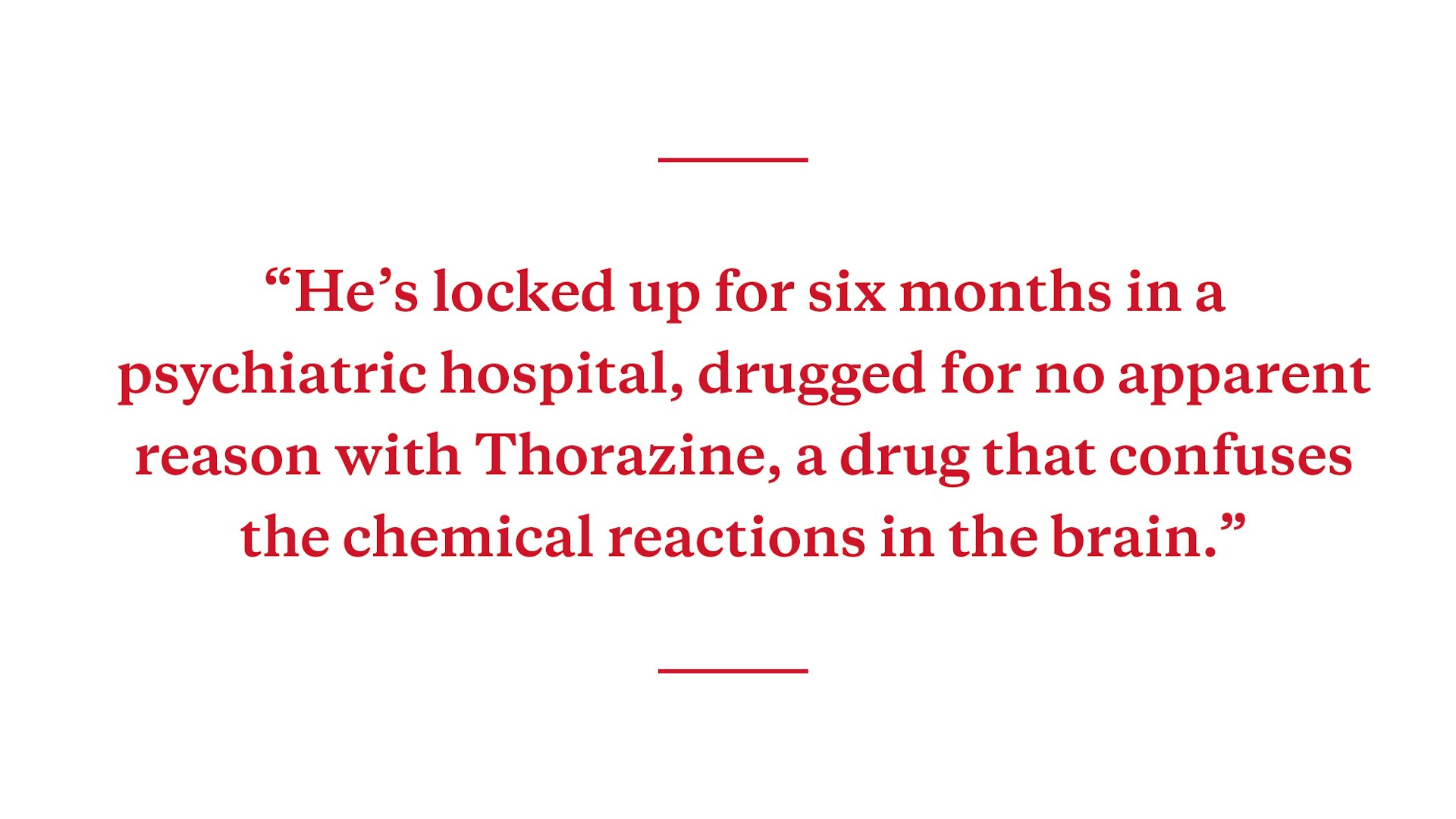
It’s 1956 or 1957 in Olneys, Richland County, Illinois, and a young Charles Hill is seven, maybe eight years old. A dream is playing on his mind. A dream that he doesn’t yet realise will one day become his premonition. His father is a wonderful bricklayer. His mother takes care of the house, and the fifteen siblings too. Food is plentiful. Charles plays basketball and baseball, he hunts deer and pheasants. He fishes. His childhood is happy. He doesn’t know why he has this dream, but he does.
Soon, like so many other black families spurred by the industrial revolution of the 50s, the Hills head north, to Michigan at first, then on to Ohio and New York. Then they move down south, towards Albuquerque.
By now Charles was a teenager, working for the state in Los Alamos. It was around 1967 when Charles enrolled in the army. He managed to avoid the frontlines for a time, but in 1968 he was finally sent to Vietnam, as a sergeant in the glorious 101st Airborne Division, the Screaming Eagles.
Charles doesn’t stay long. He asks to leave, and they demote him. He’s locked up for six months in a psychiatric hospital, drugged for no apparent reason with Thorazine, a drug that interferes with the chemical reactions of the brain. His mental health problems have continues ever since. Charles makes a deal with the army – they’ll sign his forms for immediate leave if he gives up his severance payments. Two weeks later, he flies to the United States.
In his time away, his parents have divorced. Charles returns to the U.S., he’s yet to turn twenty, and his recent memories are all but gone. His medication messes with his head. He suffers from dizziness, he hallucinates, and sometimes he faints.
**
“Tell me about your son, Antar.”
“He’s a good kid, even if his mother hits him sometimes.
“Do you keep a weapon within reach when you sleep?”
“What? A machete?”
“Whatever.”
“There’s no point in that. If they come, I have to take the machete and tear my own head off. I was in the army. Nothing I can do will save me. If they are going to kill me, let them kill me, it wouldn’t be difficult. I just ask one thing.”
“What?”
“That Antar’s not there when they come.”
**
At 11:10 PM on November 8, 1971, Dennis Arnold, a motorist from Greeley, Colorado, finds Rosenbloom’s body.
At 11:30 PM, C. Hawkings, a state police sergeant, begins searching for the getaway car. Half an hour later, the Ford Galaxy is spotted, and a high-speed chase ensues. At the intersection of Coors Boulevard and the Gun Club, the Ford Galaxy disappears. What follows is the longest manhunt New Mexico has ever witnessed, lasting eighteen days.
There are posters everywhere, adverts on the television, financial rewards too. Some 250 federal police officers are deployed, tasked with finding the fugitives.
Meanwhile, the outlaws dump the car and make their way to Olatunji’s mother’s house, their hide out. Soon they move to a friend’s place on the same street. A few days later, they hear the news, the fingerprints of Masheo and Antar have been found in the Ford. A policeman passes the men this information. A contact from the NAR brings them water and food.
On November 26, the FBI confirms Olatunji’s fingerprints have been found as well. All three men are now wanted. After a long discussion with his informant, Olatunji decides they all should leave. Masheo and Antar refuse. Olatunji wishes them luck and runs, although it doesn’t take long for Masheo and Antar to follow. Indeed just hours later, police surround the house.
On the night of the 27th, Olatunj goes to a nearby gas station, and makes a phone call to request an ambulance. When it arrives, he holds the driver at gunpoint. He tells the driver to cooperate, he doesn’t want to kill him, and the driver makes clear he won’t need to.
Having reunited, Olatunji and the two men head towards the airport, with the knowledge that a Boeing 737 is leaving for Chicago at 11:55. They approach the airliner slowly, and one of them is armed.
The flight attendant waves his hands, asking to see their tickets. Panicked, and thinking the attendant is calling for help, Olatunji prepares to shoot. Instead he holds his fire, but gets out of the truck to take aim. The attendant gets down on his knees as Olatunji climbs aboard. He carefully enters the cockpit and, from there, gives his orders. The police are deployed, but it’s in vain. Masheo and Antar take the crew hostage, and Olatunji diverts the flight to Tampa. They land, and demand that the plane be filled with petrol, in return for allowing the hostages to escape through a small door below.
On November 28 just before midday, the Boeing 737 lands at the Aeropuerto Rancho Boyeros in Havana. It’s not until 1973 that Fidel Castro and Richard Nixon will sign a prosecution agreement for hijackers who violate the airspace between Cuba and the United States. Meanwhile, during the 60s and early 70s, hijacking a plane, travelling from one country to another and taking refuge seems almost like a standard procedure.
Antar’s real name is Ralph Goodwin, ex-professor of Physics at Berkeley University. Masheo is Michael Finney, ex-police from the same city. And Fela Olatunji had that dream that turned out to be a premonition.
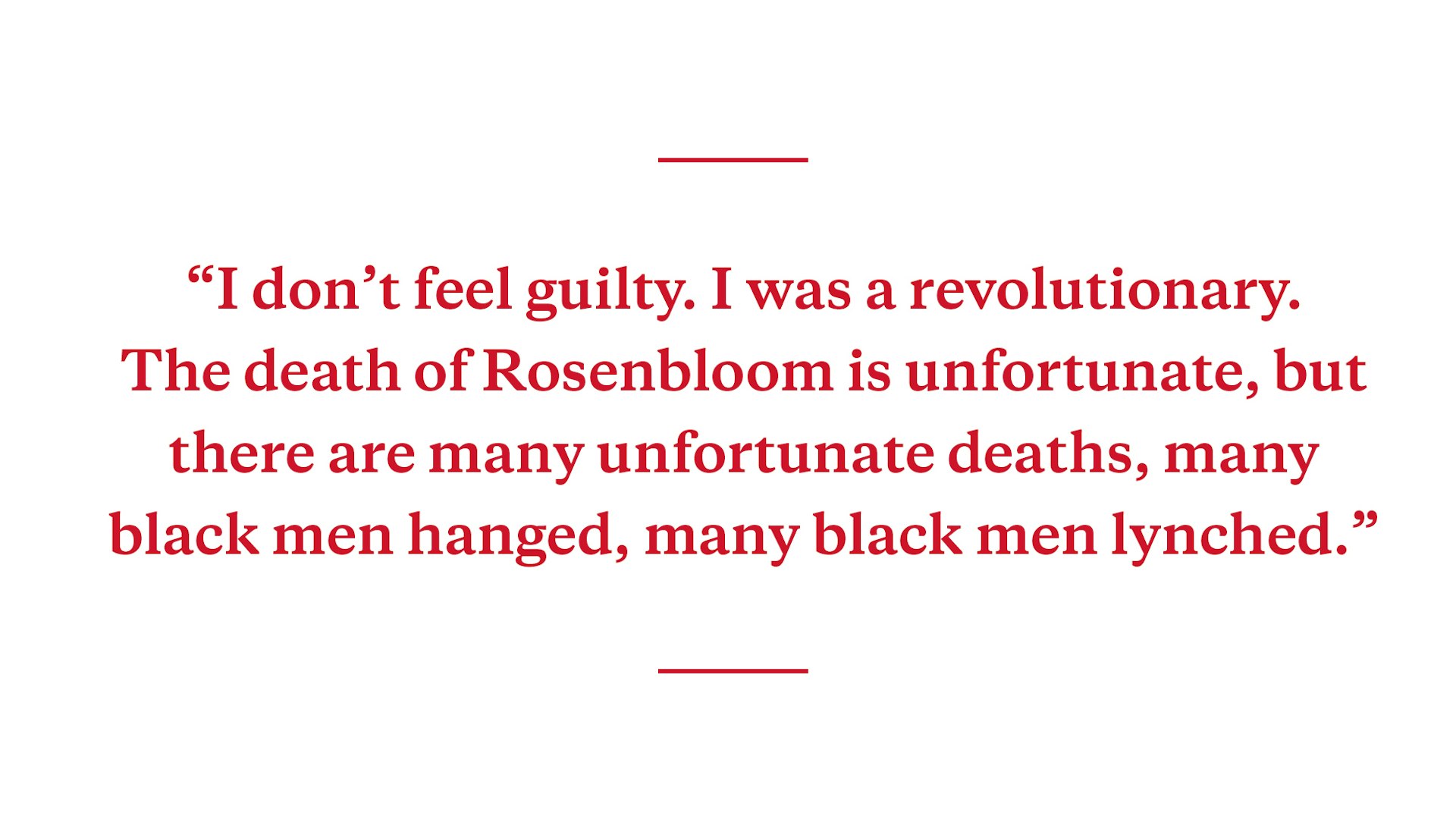
“Do you feel guilty?”
“I don’t feel guilty. I was a revolutionary. The death of Rosenbloom is unfortunate, but there are many unfortunate deaths, many black men hanged, many black men lynched. There are many unfair deaths around here.”
**
In August 1969, Charles, paranoid and confused, is looking for an uncle in Oakland. When his uncle dies, Charles and his cousin inherit construction equipment and a staff of ten or twenty workers. They sell the equipment and both head to Alaska, where salaries are high. There, at night, along with his cousin, Charles works on an oil line. At night (and it’s always night time in Alaska), together with his cousin, he reads Malcom X, Franz Fanon and Che Guevara.
After a long while, both men return to Oakland, and in June 1971, Charles joins the ranks of the NAR. He adopts a pseudonym. Together with Masheo and Antar he loots shops, plans robberies, hijacks guards. His weapons of choice are 9mm handguns and Browning shotguns. And so he survives, without a clear plan, until in Jackson, Mississippi, the organisation’s headquarters, a policeman is killed and an FBI official and agent are wounded. The Oakland cell is disbanded and Charles flees towards Louisiana in a 1962 Ford Galaxy.
**
“You had two children before the age of 22?”
“Caroline, and a boy I never met. My wife was pregnant when I arrived in Cuba.”
“What happened to them?”
“The boy died, they shot him, I don’t know why. I speak to Caroline now and again.”
“Do you talk about what happened?”
“Only once. She asked me why I’d done it.”
“And what did you tell her?”
“Because of how things were. To free our race. But I don’t think she understood. I accept that. She doesn’t need to understand.”
**
Upon arriving, Charles sees Cuba as a springboard for continuing the fight in America. He spends six weeks in confinement, under investigation, but soon he’s found a house in the Siboney compound, together with other fugitives. During the ‘70s, internationally renowned Afro-American leaders pass through Havana: Huey Newton, Eldridge Cleaver, Angela Davis.
“Cuba was very striking,” he says. “There were people from all over the world, especially from Africa. Young people were studying. You could feel the fire, the inspiration of the Revolution. The police with guns on their belts, that burning, the vigour.”
He cuts cane, he sows Pangola grass, and in 1975 he begins studying history. In 1979, he’s arrested for forging currency. Handed a four-year sentence, he serves just fourteen months. In 1986, they imprison him for eight months for possession of marijuana. Some time later, he’s presumed dead. They call his then wife in to identify the body, but the feet are not those of her husband. Eventually, he reappears. Nobody knows where he’s been.
No longer dead, Charles begins to translate English texts, mainly religious books, and spurred on by demand, he swaps Marxism for the African saints.
He is still, after Joanne Chesimard (or Assata Shakur, legendary leader of the Black Panthers, who has a price of two million dollars on her head) and William Morales (Puerto-Rican independence activist accused of planting bombs in New York during the ‘70s), the third or fourth most important name on the list of fugitives known by the FBI to be residing in Cuba.
The difference is that Assata — who was sentenced to life in 1973 for the alleged killing of a New Jersey police officer, escaped in 1979 from Hunterdon Country Maximum Security Jail and took refuge in Havana from 1984 — has even received public support from Fidel Castro. Meanwhile, Charles seems like an irritating burden, an uncomfortable remnant of another time. In 2014, he fears that one day, with the possible improvement of US-Cuban relations, they’ll use him as a token to negotiate.
**
“When did you decide to fire at Rosenbloom?”
“It wasn’t a decision. It was inevitable. We couldn’t talk to him. He already had a gun in his hand. He wanted to make himself a hero like John Wayne. Another racist policeman. It wasn’t murder.”
“His widow says that you’re a coward. That it was murder.”
“That’s her right.”
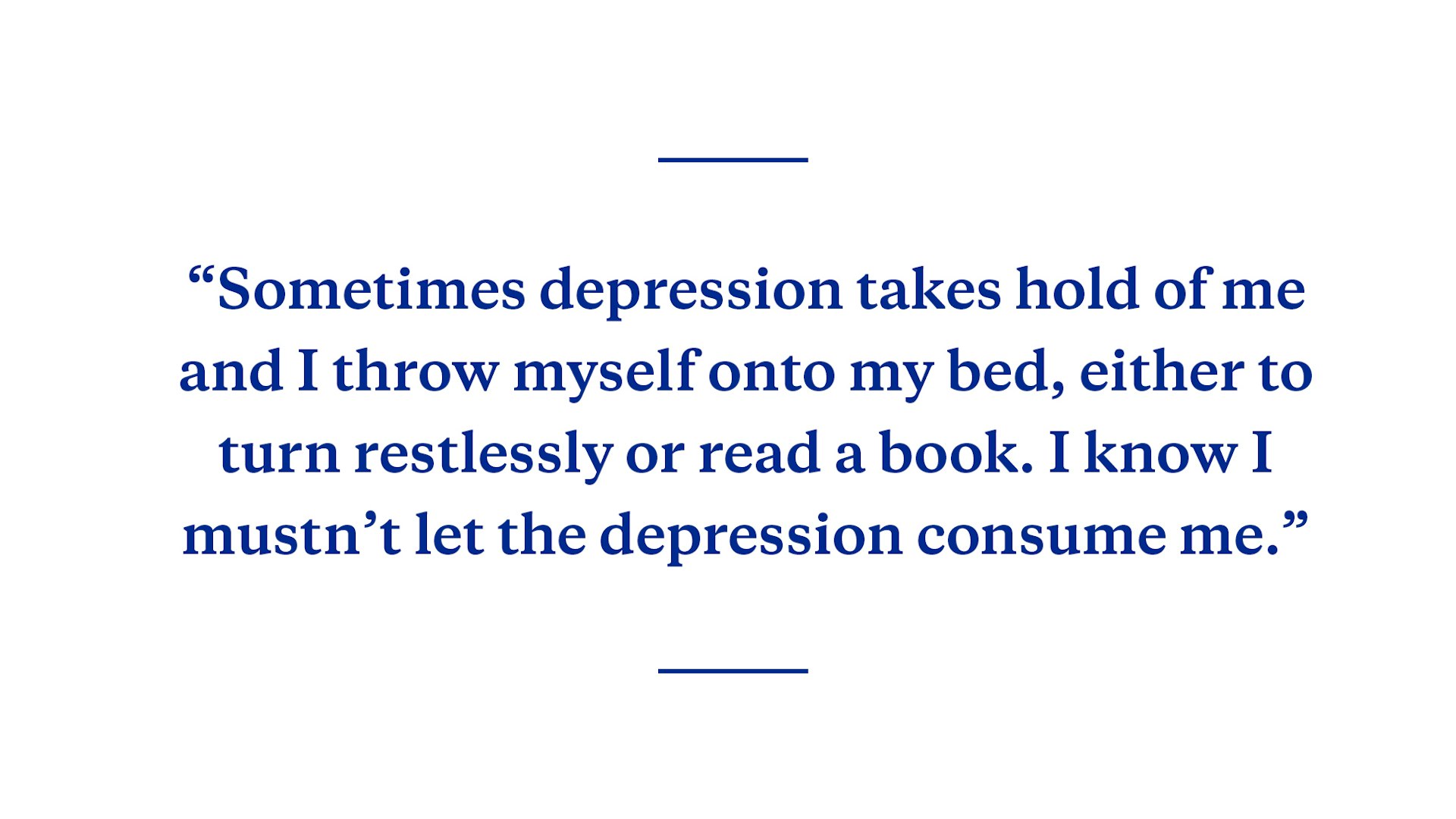
It’s now the start of 2015 and Charles’ reality has been turned upside down. By some irony verging on cruelty, the first black president of his country, Barack Obama, is the very president who could negotiate his extradition and conviction.
“Sometimes depression takes hold of me and I throw myself onto my bed, either to turn restlessly or read a book. But I mustn’t let the depression take over.”
In 1996 Bill Richardson, a New Mexico Governor, travelled to Havana to request Charles’ return. But it was 1996, a year when tensions between the Clinton administration and Fidel Castro’s government reached boiling point.
Now though, with a rapprochement between both countries in full swing following a fifty-three year hiatus, the extradition request by Susana Martínez, governor of New Mexico, no longer seems so far-fetched. The presence of fugitives in Cuba was the White House’s main argument for keeping Cuba on the Terrorism List (it remained on this list until mid-2015).
According to a recent US State Department announcement, Washington and Havana will finally sit down to discuss the cases of Assata and Morales. There’s nothing to suggest that the next conversation won’t be about Charles.
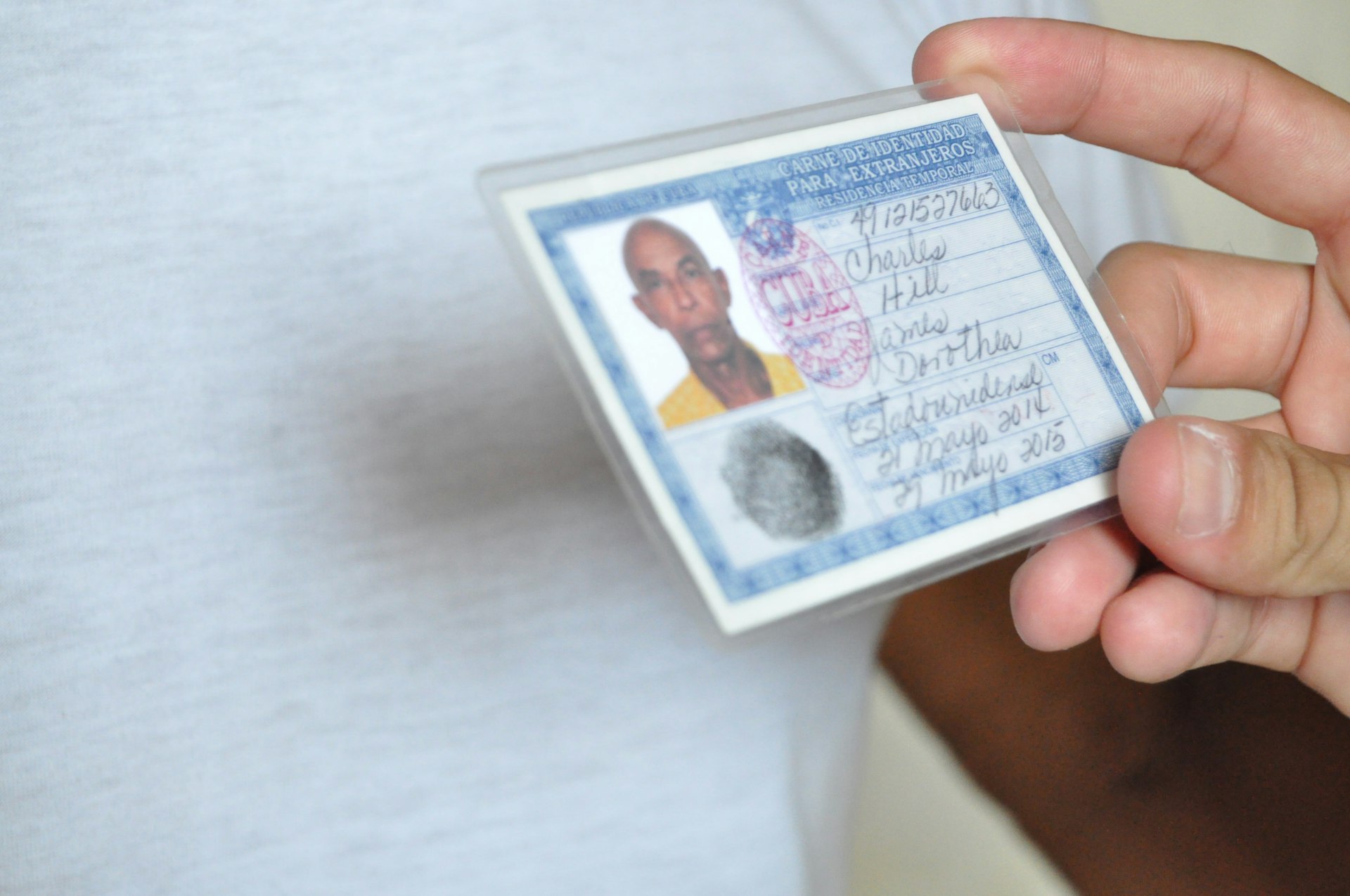
However, today — on this silent and cloudy morning — Charles has already downed two full glasses of rum, ignoring whatever is going on outside his door. Chatty and charismatic as usual, he agrees to talk about these past months, and the unprecedented turnaround of his situation.
On December 17, he says, he found himself in Cárdenas, in a nephew’s house. There he heard Obama’s speech on a Miami television station. When he returned to Havana, he received a visit, and was told nothing would happen. He was asked to please lay low for a while.
Laying low for Charles means not prowling through Old Havana, which is what he tends to do to make a living. He looks for tourists to guide. He tells them about the emblematic sites of the historic centre: Hemingway’s hotel, famous restaurants, wooded parks, the statues of the Republic.
Then he says that he’s put up with a lot, but that he can’t put up with any more. That you have to go out fighting. You can’t really live on 250 pesos, and he needs to buy his son shoes and drink his rum. “Let whatever happens, happen. If I bump into a senator in the street, I’ll even give him a tour.”
His accent is that of a refugee, but what he’s saying could not be more Cuban. Asking him again about Assata Shakur, he replies that she is the queen of disguise, that a few months back he saw her in the street, and that Assata gave him a sign of complicity.
“If I was in a situation like hers, if someone sent me 200 or 250 dollars each month, I could also live the high life.”
But Charles is not able to live the high life. He has the most powerful government in the world at his heels, and Cuban poverty before him. Because he must survive, he cannot fear. And because he lives in fear — he does fear something — he does not worry too much about surviving. He’s been seen so many times, in so many different places, that over 65 years his fears, few but not small, are nonetheless smaller than his apathy. Next to his Ifá table, there’s a book by Noam Chomsky, and another called Agents of Repression, about the secrets of the FBI and the war against the Black Panthers. There are hanging clothes a can used as an ash tray, and a Martí notebook.
**
“You told me that justice was knocking at your door.”
“That justice was right behind me.”
“Do you owe anything to justice?”
“No.”
“And this dream, this premonition that won’t leave you alone, what is it?
“I was a boy and I dreamt they were chasing me with a spear. That they were chasing me. Many people. And I felt alone. I didn’t have my father, nor my brothers, nor anybody. And the spear had a hole in the centre, and I was left like this, waiting for them to rescue me. And I was a boy, and they released the spear and the spear came towards me.”
Enjoyed this article? Like Huck on Facebook and follow us on Twitter
